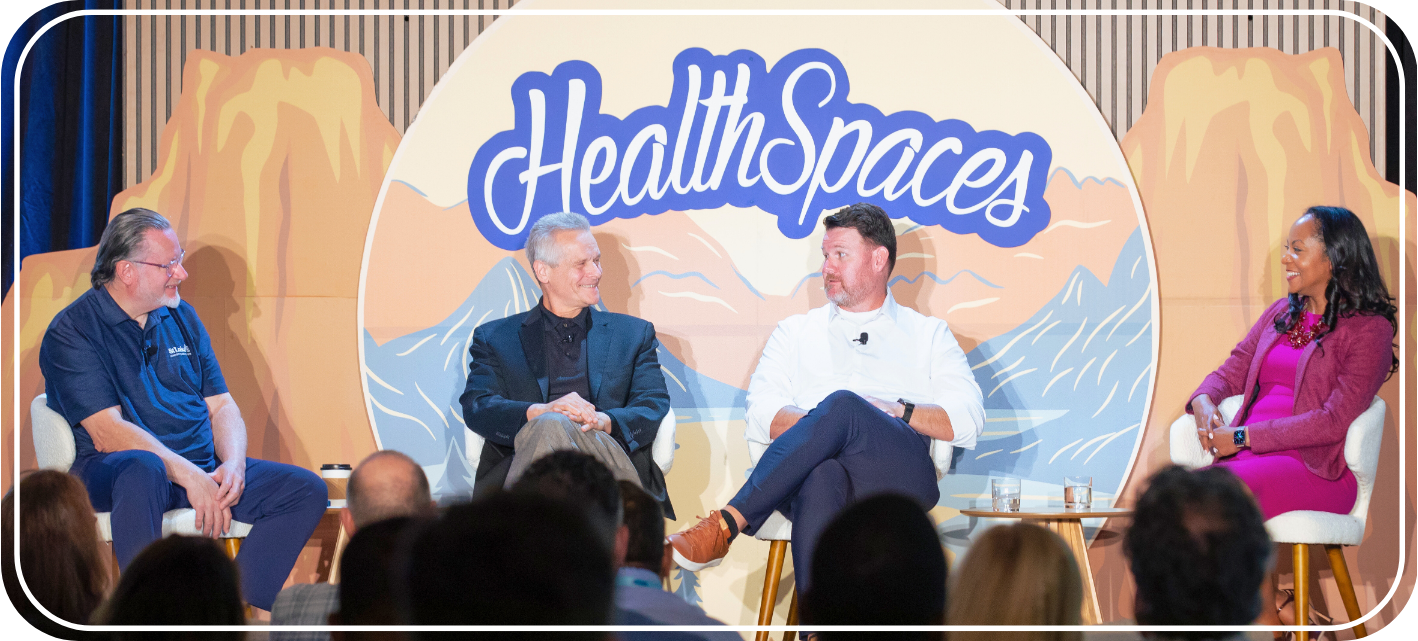Not every health system has the budget to build. Not every building can be saved. And not every facilities leader has the time—or the staff—to do both.
At HealthSpaces, four healthcare leaders laid out what they’re really up against—and how they’re adapting.
The discussion featured Dominique Casimir, SVP of Enterprise Asset Management at Jefferson Health; Jim Mladucky, VP of Planning & Construction at IU Health; Clayton Smith, SVP of Facilities at Children’s Health; and Lee Levicoff, VP of Planning, Construction & Real Estate at St. Luke’s University Health Network.
“There’s what you want to do—and what you can do,” Mladucky said. The discussion lived in that tension. It wasn't about best practices—it was about pressure, priorities, and investing where it actually matters.
Protecting Infrastructure from Getting Cut First
At Jefferson Health, Casimir is working to ensure the infrastructure doesn't keep falling to the bottom of the list. Her team helped establish a separate capital stream for essential systems and utilities, so they're no longer competing with flashier, growth-driven projects.
"An MRI will always beat an air handler," she said. The only way to fix that is to stop putting them in the same race.
The takeaway: if infrastructure is expected to win on the same scorecard as revenue generators, it’ll always lose.
Making Capital Dollars Work Harder
IU Health is taking a broader approach. With a $4.3 billion hospital project underway in downtown Indianapolis, Mladucky emphasized that new construction has to deliver more than upgraded facilities.
“If all we do is build a better hospital, we’ve failed,” he said. The project includes investments in housing, education, and workforce infrastructure, meant to move the needle on long-term community health, not just the patient experience.
In today’s environment, capital dollars can’t just build—leaders are looking for how they can compound.
When the Risk is People, Not Equipment
Deferred maintenance isn’t just about chillers and air handlers. It’s also about who’s still around to run them.
At St. Luke’s, Levicoff raised a concern that’s becoming more urgent across health systems: experienced plant ops staff are retiring, and many are taking undocumented knowledge with them.
“We’re not just losing people,” he said. “We’re losing how this place works.”
Children’s Health is tackling that head-on. Smith said succession planning and leadership development are now directly tied to their capital outlook. Without the right people, the facilities themselves don’t function.
With skilled trades in short supply and training timelines being long, this gap is becoming increasingly difficult to ignore.
Reframing Infrastructure as Revenue Protection
Smith also shared how his team makes the case for funding infrastructure without leaning on fear tactics.
“We go back and reopen the wound,” he said. “And we keep poking it until they feel the pain.”
The idea isn’t to scare leadership—it’s to connect the dots between capital spend and care delivery. Infrastructure failures can quickly lead to downtime, patient safety risks, and lost revenue.
By quantifying risk in financial and operational terms, the facilities team makes their case in the language leadership understands.
Scrapping the Scorecard That Doesn’t Work
Traditional capital prioritization tools—based on age, backlog, and cost—aren’t cutting it anymore. Casimir said her team had to push for new metrics that reflect real risk: safety, operations, workforce, and revenue impact.
Mladucky agreed. “We can’t treat infrastructure like it’s separate from care,” he said. “It’s core to how the system functions—and it needs to be planned like it.”
Capital tools need to evolve with the pressure systems are under—or they’ll keep failing the decisions they’re meant to support.
How Leaders Are Moving Forward
The discussion didn’t surface a universal answer, because there isn’t one. Every system has different pressures. Every decision has tradeoffs.
However, what came through was clear: smart capital planning doesn’t mean choosing between growth and maintenance. It means understanding what your system truly needs to keep functioning—and finding ways to protect those priorities from getting cut.
Watch the entire discussion here 👇

Posted by
Collaborate with your Peers!
HealthSpaces is a community for people that plan, design, build and operate spaces where healthcare is delivered.
June 7-9, 2026 | Braselton, GA
Learn More




-4.png)
-Dec-09-2025-05-48-44-4379-PM.png)
-4.png)
-1.png)
-2.png)

Comments